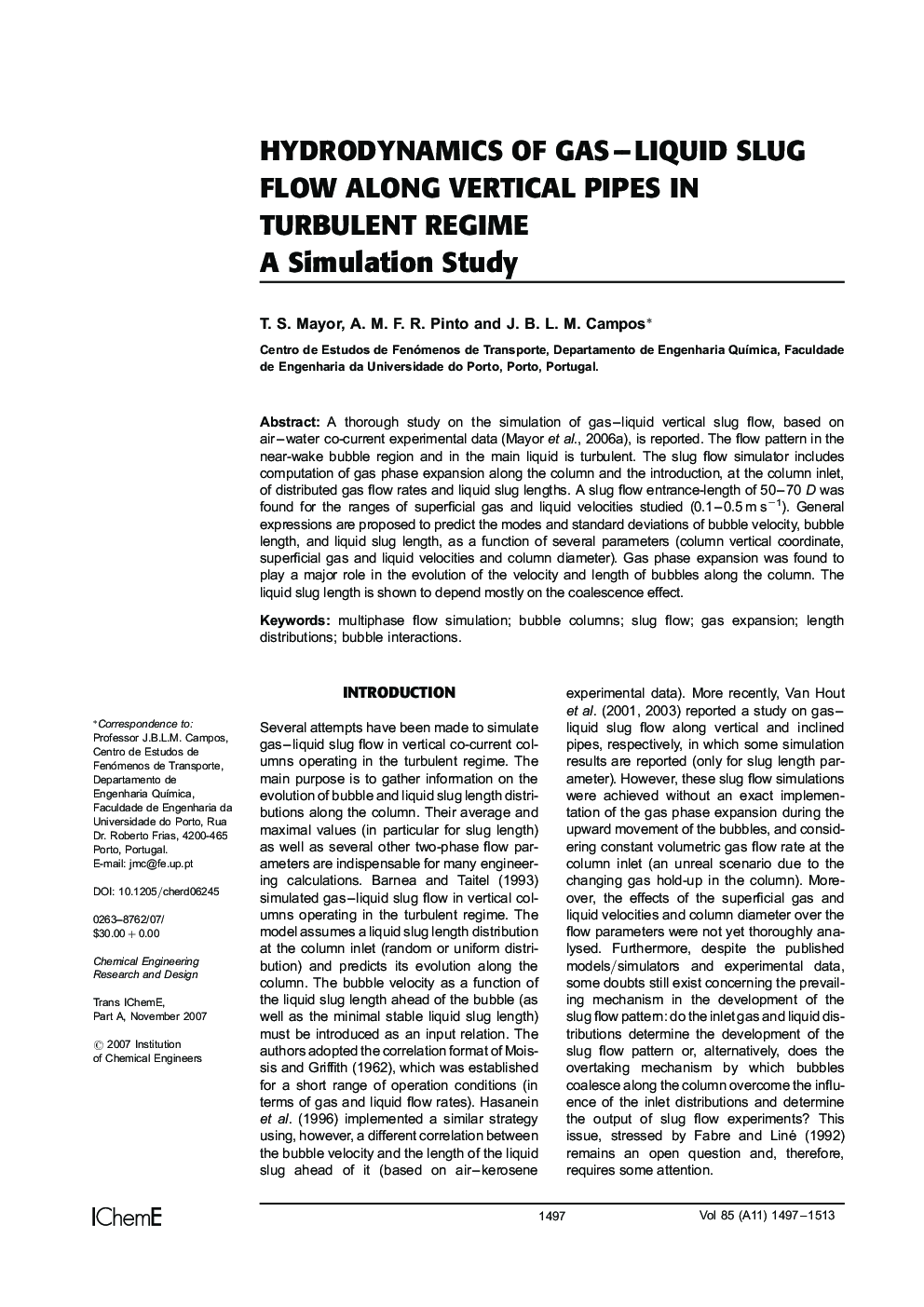| Article ID | Journal | Published Year | Pages | File Type |
|---|---|---|---|---|
| 622551 | Chemical Engineering Research and Design | 2007 | 17 Pages |
A thorough study on the simulation of gas–liquid vertical slug flow, based on air–water co-current experimental data (Mayor et al., 2006a), is reported. The flow pattern in the near-wake bubble region and in the main liquid is turbulent. The slug flow simulator includes computation of gas phase expansion along the column and the introduction, at the column inlet, of distributed gas flow rates and liquid slug lengths. A slug flow entrance-length of 50–70 D was found for the ranges of superficial gas and liquid velocities studied (0.1–0.5 m s−1). General expressions are proposed to predict the modes and standard deviations of bubble velocity, bubble length, and liquid slug length, as a function of several parameters (column vertical coordinate, superficial gas and liquid velocities and column diameter). Gas phase expansion was found to play a major role in the evolution of the velocity and length of bubbles along the column. The liquid slug length is shown to depend mostly on the coalescence effect.
